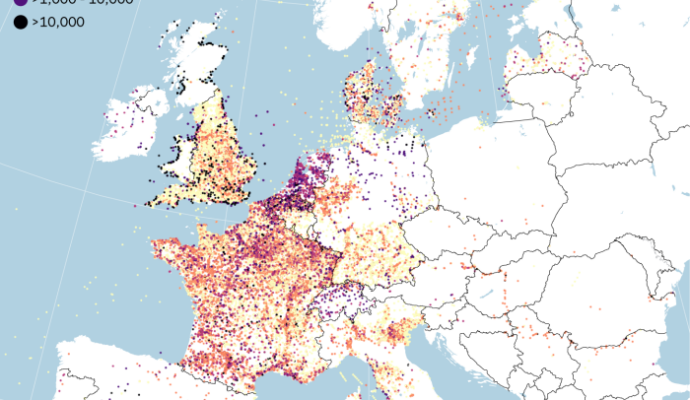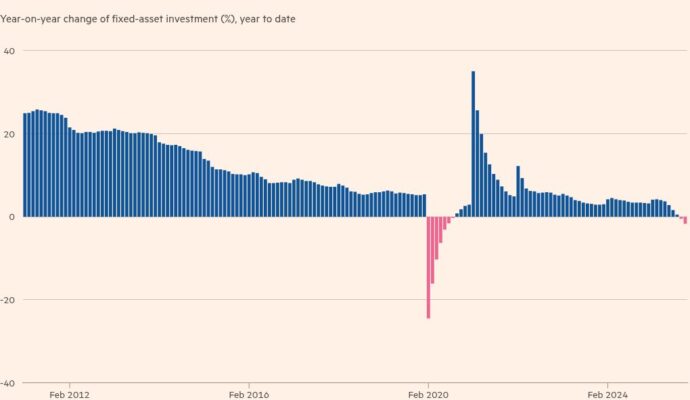Stay informed with free updates
Simply sign up to the Travel & leisure industry myFT Digest — delivered directly to your inbox.
Hong Kong tourists have postponed or cancelled trips to Japan this summer over fears that a reference in a comic book to a natural disaster in early July could prove prophetic.
While Japan continues to receive record numbers of tourists overall, inbound travellers from Hong Kong fell 11 per cent to 193,100 in May, the most recent month for which data was available.
“It is better to believe it exists than to believe it does not exist,” said Hongkonger Brian Lee, in his 30s, who was planning a trip to Japan but has decided against it. “There’s no need to risk one’s life.”
The rush to change travel plans — which has prompted airlines to cut back on flights and knocked prices of packaged tours — was prompted by a Japanese graphic novel, or manga, published four years ago that claimed the country would suffer an unspecified disaster around July 5 2025.
Some have interpreted the warning as a volcanic disruption or tsunami, but many assume that, given Japan’s propensity for earthquakes, the long-predicted “big one” will come this summer.
Japan is still on track to surpass last year’s record of nearly 37mn inbound arrivals, after receiving a record 3.7mn visits in May, up 21.5 per cent on the same month last year. The country has had a recent surge of interest in destinations including Tokyo, Osaka and Kyoto, thanks in part to the weak yen.
But travel agents in Hong Kong, one of Japan’s four biggest sources of tourists, said they started observing the drop in demand as long ago as March. Efforts by the Japanese government to reassure anxious would-be travellers have failed.
Cathay Pacific’s budget arm HK Express said it had registered a “short-term” impact on summer bookings to Japan, but added that it believed “interest will rebound once the rumours subside”.
Hong Kong Airlines, another carrier in the city, has cancelled or reduced the frequency of some routes to Japan in July and August, citing “sluggish demand”.
Group tour prices across Japan this summer have dropped 10-20 per cent, according to Steve Huen, executive director of Hong Kong-based EGL Tours. “Some tour groups are offering prices of HK$7,000-HK$8,000 [US$892-$1,020], when they were over HK$10,000 in the past,” he said.

The fears have been traced to a comic by Japanese writer Ryo Tatsuki, titled “The Future I Saw: Complete Edition”, which was published in 2021 and predicted a “catastrophe” around July 5 2025.
Tatsuki became renowned after a previous version of the same manga, published in 1999, predicted a disaster in March 2011 — the same month that Japan suffered the devastating 9.0-magnitude Tohoku earthquake and tsunami.
Some feng shui masters in Hong Kong have warned of natural disasters in Japan this year, including TV personality “Master Seven” who urged people to refrain from visiting the country in April and May. Other feng shui practitioners have pointed to dangers in July.
Ryoichi Nomura, director-general of the Japan Meteorological Agency, called such predictions “a hoax”.
“With our current scientific knowledge, it is impossible to predict the exact date, time, location, and size of an earthquake,” he said. “There is absolutely no need to worry about it.”
In January, a government panel of experts said that there was an “around 80 per cent” chance of an 8-9 magnitude occurring in the Nankai Trough over the next 30 years, raising the perceived risk slightly from the previous estimate.
But for some Hongkongers, the falling demand has created an opportunity in the form of cheaper airfare. Bea Siu, a public relations executive, bought tickets to Osaka to celebrate her birthday with a friend in July.
“The rumours . . . [have] no strong scientific basis,” she said. “Prophecies about the end of the world have not come true before.”
Additional reporting by Gloria Li in Hong Kong


